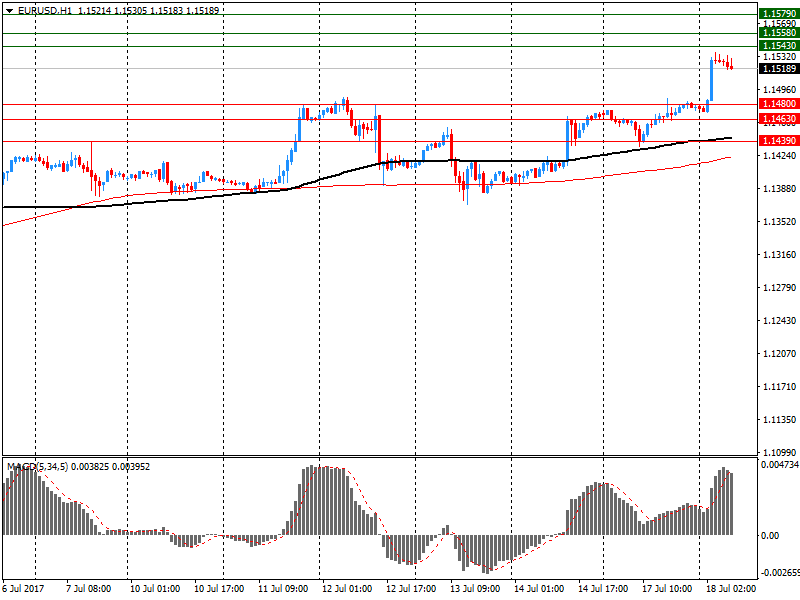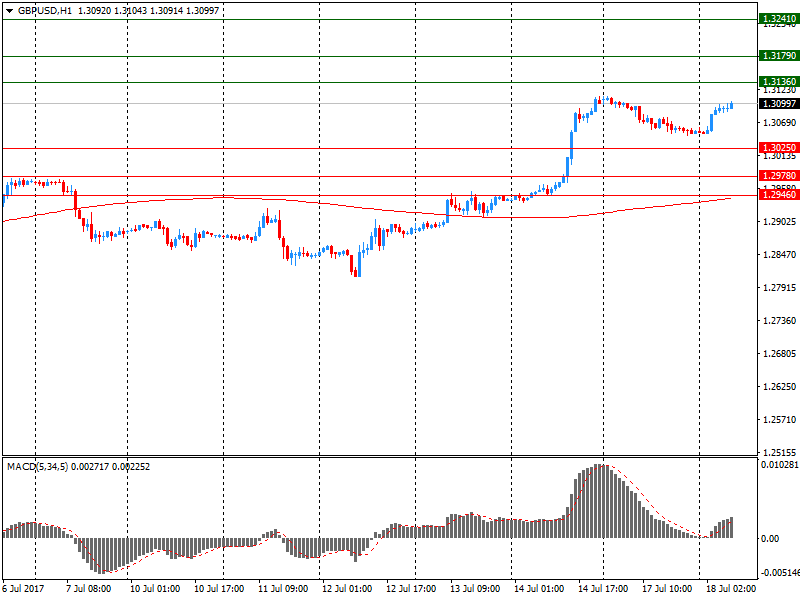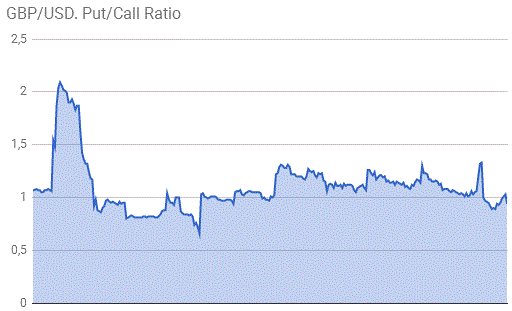Noticias del mercado
-
22:01
U.S.: Net Long-term TIC Flows , May 91.9 (forecast 20.3)
-
22:00
U.S.: Total Net TIC Flows, May 57.3
-
16:05
Builder confidence in the US housing market slipped two points in July to a level of 64 - NAHB
Builder confidence in the market for newly-built single-family homes slipped two points in July to a level of 64 from a downwardly revised June reading on the National Association of Home Builders/Wells Fargo Housing Market Index (HMI). It is the lowest reading since November 2016.
"Our members are telling us they are growing increasingly concerned over rising material prices, particularly lumber," said NAHB Chairman Granger MacDonald, a home builder and developer from Kerrville, Texas. "This is hurting housing affordability even as consumer interest in the new-home market remains strong."
"The HMI measure of current sales conditions has been at 70 or higher for eight straight months, indicating strong demand for new homes," said NAHB Chief Economist Robert Dietz. "However, builders will need to manage some increasing supply-side costs to keep home prices competitive."
-
16:03
Euro hits more than one-year high vs U.S. dollar of $1.1582 after weaker-than-expected U.S. July NAHB housing market index data
-
16:00
U.S.: NAHB Housing Market Index, July 64 (forecast 67)
-
15:50
Option expiries for today's 10:00 ET NY cut
EURUSD: 1.1500 (EUR 345m) 1.1530 (275m)
USDJPY: 111.90-112.00 (USD 630m) 112.25 (850m) 112.50 (220m)
GBPUSD: 1.3050 (GBP 320m) 1.3100 (375m)
USDCHF: 0.9730 (USD 400m)
NZD USD: 0.7275 (NZD 280m) 0.7300 (210m)
-
15:49
Italy economy minister says Veneto banks resolution suggests state-managed liquidation should be available to other banks
-
14:38
US export and import prices declined in June
U.S. import prices declined 0.2 percent in June, the U.S. Bureau of Labor Statistics reported today, after a 0.1-percent decrease in May. Lower fuel prices drove the drop in June, which more than offset higher nonfuel prices. The price index for U.S. exports fell 0.2 percent in June following a 0.5-percent decline in May.
The price index for fuel imports fell for a fourth consecutive month, declining 2.1 percent in June, after decreasing 4.6 percent over the previous 3 months. The main contributor to the drop was a 2.2-percent decline in petroleum prices. Natural gas prices also fell in June, decreasing 1.0 percent. Despite the
recent drops, import fuel prices advanced 6.3 percent over the 12-month period ended in June. The import price index for petroleum increased 4.5 percent over the past year and natural gas prices rose 58.6 percent.Prices for U.S. exports fell for a second consecutive month in June, declining 0.2 percent. Falling prices for agricultural exports drove the decrease as nonagricultural export prices recorded no change. U.S. export prices increased over the past year, advancing 0.6 percent. The price index for U.S. exports has not recorded a 12-month decline since a 0.2-percent fall in November.
-
14:30
U.S.: Import Price Index, June -0.2% (forecast -0.2%)
-
13:54
Saudis Considering Further 1m B/D Export Cut: Consultant PPI via BBG @zerohedge
-
13:07
Republican-led U.S. House budget panel unveils fiscal 2018 budget plan with reconciliation instructions for tax reform
-
Budget plan sets path for partisan repeal of Dodd-Frank Wall St. reforms
-
Includes $4.02 trillion in outlays for 2018, including $621.5 billion for defense and $511 billion in nondefense discretionary spending
-
Seeks $203 billion in savings over a decade from mandatory programs including welfare, food stamps
-
-
12:08
UK 5-year gilt yield falls to lowest since june 28 after weaker-than-expected CPI data, now down 2 bps on day at 0.64 pct
-
11:28
The ZEW Indicator of Economic Sentiment for Germany fell slightly by 1.1 points in July
The ZEW Indicator of Economic Sentiment for Germany fell slightly by 1.1 points in July 2017 and now stands at 17.5 points. The indicator thus still remains below the long-term average of 23.8 points. The assessment of the current economic situation in Germany decreased by 1.6 points in July.
The corresponding indicator, however, still remains at a fairly high level of 86.4 points. "Our overall assessment of the economic development in Germany remains unchanged compared to the previous month. The outlook for the German economic growth in the coming six months continues to be positive. This is now also reflected in the survey results for the eurozone," comments ZEW President Professor Achim Wambach, PhD.
-
11:00
Eurozone: ZEW Economic Sentiment, July 35.6 (forecast 37.2)
-
11:00
Germany: ZEW Survey - Economic Sentiment, July 17.5 (forecast 18)
-
10:43
UK house prices grew by 4.7% in the year to May
UK house prices grew by 4.7% in the year to May 2017, 0.6 percentage points lower than in the year to April 2017. While the annual growth rate has slowed since mid-2016 it has remained broadly around 5% during 2017.
In terms of housing demand the Royal Institute of Chartered Surveyors' (RICS) residential market survey for May 2017 reported that price expectations remain moderately positive while new buyer enquiries decreased over the month.
The UK Property Transaction statistics showed that in May 2017 the number of seasonally adjusted property transactions completed in the UK with a value of £40,000 or above increased by 13.4% compared to May 2016. The unusually low level of transactions in May 2016 was associated with the introduction of thehigher tax rates on additional propertiesintroduced from 1 April 2016. Comparing May 2017 to April 2017, property transactions fell by 3.3%.
Looking closer at the regional level of the UK, the East of England showed the highest annual growth, with prices increasing by 7.5% in the year to May 2017. This was followed by the East Midlands at 7.2%. The lowest annual growth was in the North East, where prices increased by 1.6% over the year, followed by London at 3.0%.
-
10:35
UK producer price inflation mixed in June
The annual rate of inflation for goods leaving the factory gate slowed for the second time this year in June and follows a steep decline in input price inflation since January 2017.
Factory gate prices (output prices) rose 3.3% on the year to June 2017 from 3.6% in May 2017, which is the slowest rate prices have increased since December 2016.
Input prices rose 9.9% on the year to June 2017 from 12.1% in May 2017, meaning the annual rate has fallen 10 percentage points since January 2017.
Inputs of crude oil is the main driver of the recent slowing of input price inflation as annual price growth for crude oil fell from 88.9% in February 2017 to 9.1% in June 2017.
Core output inflation rose 2.9% on the year to June 2017 from 2.8% in May 2017 and is now the largest contributor to the annual rate of inflation for goods leaving the factory gate.
-
10:33
UK CPI flat in June
The Consumer Prices Index including owner occupiers' housing costs (CPIH, not a National Statistic) 12-month inflation rate was 2.6% in June 2017, down from 2.7% in May 2017.
This is the first fall in the CPIH inflation rate since April 2016, although it remains higher than in recent years.
Falling prices for motor fuels and certain recreational and cultural goods and services were the main contributors to the fall in the rate.
These downward contributions were partially offset by rising prices for furniture and furnishings.
The Consumer Prices Index (CPI) 12-month rate was 2.6% in June 2017, down from 2.9% in May 2017.
-
10:32
United Kingdom: Producer Price Index - Output (YoY) , June 3.3% (forecast 3.3%)
-
10:31
United Kingdom: Producer Price Index - Output (MoM), June 0.0% (forecast 0.0%)
-
10:31
United Kingdom: Retail Price Index, m/m, June 0.2% (forecast 0.3%)
-
10:31
United Kingdom: Retail prices, Y/Y, June 3.5% (forecast 3.7%)
-
10:31
United Kingdom: Producer Price Index - Input (MoM), June -0.4% (forecast -1%)
-
10:31
United Kingdom: Producer Price Index - Input (YoY) , June 9.9% (forecast 8.7%)
-
10:31
United Kingdom: HICP ex EFAT, Y/Y, June 2.4% (forecast 2.6%)
-
10:30
United Kingdom: HICP, m/m, June 0.0% (forecast 0.2%)
-
10:30
United Kingdom: HICP, Y/Y, June 2.6% (forecast 2.9%)
-
10:00
Minutes - Swedish Central Bank's Ingves says a rapid krona appreciation, as a result of, for example, changes to monetary policy in the major currency areas, poses a risk that requires vigilance
-
Jansson says if the ECB continues to buy more assets next year, a scenario expected on the financial markets, it will probably be very difficult for the Riksbank to stop new purchases altogether already at the turn of the year
-
-
09:30
German 10-year bond yields briefly touch highest level since jan 2016 at 0.589 pct
-
08:36
Options levels on tuesday, July 18, 2017
EUR/USD
Resistance levels (open interest**, contracts)
$1.1579 (5243)
$1.1558 (2744)
$1.1543 (1514)
Price at time of writing this review: $1.1519
Support levels (open interest**, contracts):
$1.1480 (60)
$1.1463 (250)
$1.1439 (773)
Comments:
- Overall open interest on the CALL options and PUT options with the expiration date August, 4 is 65415 contracts (according to data from July, 17) with the maximum number of contracts with strike price $1,1500 (5243);
GBP/USD
Resistance levels (open interest**, contracts)
$1.3241 (2271)
$1.3179 (3029)
$1.3136 (2221)
Price at time of writing this review: $1.3099
Support levels (open interest**, contracts):
$1.3025 (543)
$1.2978 (353)
$1.2946 (377)
Comments:
- Overall open interest on the CALL options with the expiration date August, 4 is 26479 contracts, with the maximum number of contracts with strike price $1,3100 (3029);
- Overall open interest on the PUT options with the expiration date August, 4 is 24711 contracts, with the maximum number of contracts with strike price $1,2800 (3056);
- The ratio of PUT/CALL was 0.93 versus 0.94 from the previous trading day according to data from July, 17
* - The Chicago Mercantile Exchange bulletin (CME) is used for the calculation.
** - Open interest takes into account the total number of option contracts that are open at the moment.
-
08:15
Republican Sen. Mike Lee and Jerry Moran announce opposition to health care bill, dealing blow to GOP hopes @AP
-
08:08
RBA minutes: jobs data positive, provided further confirmation of improvement in labour market
-
Data suggest gdp growth increased in q2, household consumption picked up
-
Underemployment still elevated, wage pressures subdued
-
Recent rise in employment to support household incomes, spending
-
Fiscal policy to be more expansionary in 2017/18 than previously expected
-
Too early for tighter lending rules to have full effect on housing market
-
Stronger infrastructure spending to have significant positive spillovers to economy
-
Repeats a rising AUD would complicate economic rebalancing
-
-
08:05
Powerful 7.4-magnitude earthquake strikes the Bering Sea between American and Russian islands; no tsunami threat - USGS
-
08:02
New Zealand CPI was flat overall at 0.0% in Q2
Quarterly change:
In the June 2017 quarter compared with the March 2017 quarter:
The consumers price index (CPI) was flat overall at 0.0 percent (down 0.1 percent with seasonal adjustment).
Food prices rose 0.7 percent, influenced by higher prices for vegetables (up 19 percent).
Housing and household utilities prices rose 0.8 percent, influenced by purchase of new housing (up 1.8 percent).
Transport prices fell 1.3 percent, with cheaper domestic airfares (down 15 percent).
Annual change:
From the June 2016 quarter to the June 2017 quarter:
The CPI inflation rate was 1.7 percent.
Housing and household utilities increased 3.1 percent, with purchase of new housing up 6.4 percent.
Communication prices decreased 4.6 percent, with large decreases for telecommunications services and equipment.
Tradable prices increased 0.9 percent, while prices for non-tradables increased 2.4 percent.
The average price of 1 litre of 91 octane petrol was $1.86 in the June 2017 quarter, down from $1.90 in the March 2017 quarter, and up from $1.78 in the June 2016 quarter.
-
07:59
Trump urges republicans in U.S. Congress to pass repeal of Obamacare healthcare law and work on replacement legislation - Twitter
-
07:58
U.S. 10-year treasuries yield at 2.305 percent vs U.S. close of 2.309 percent on Monday
-
03:31
Australia: New Motor Vehicle Sales (MoM) , June 1.2%
-
03:31
Australia: New Motor Vehicle Sales (YoY) , June 3.6%
-
00:46
New Zealand: CPI, y/y, Quarter II 1.7% (forecast 1.9%)
-
00:45
New Zealand: CPI, q/q , Quarter II 0.0% (forecast 0.2%)
-
00:17
Currencies. Daily history for Jul 17’2017:
(pare/closed(GMT +2)/change, %)
EUR/USD $1,1477 +0,09%
GBP/USD $1,3054 -0,36%
USD/CHF Chf0,96227 -0,12%
USD/JPY Y112,62 +0,08%
EUR/JPY Y129,27 +0,18%
GBP/JPY Y147,032 -0,27%
AUD/USD $0,7794 -0,41%
NZD/USD $0,7319 -0,37%
USD/CAD C$1,26959 +0,38%
-


